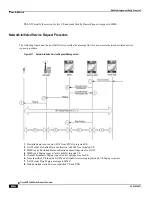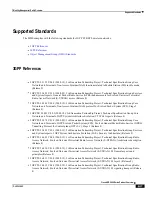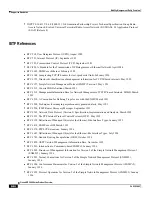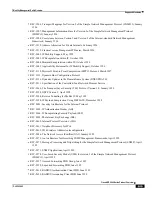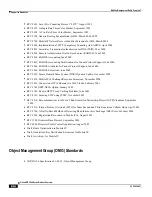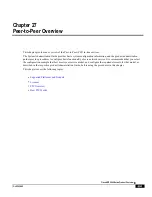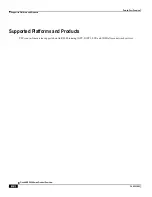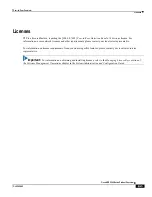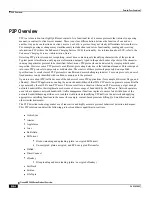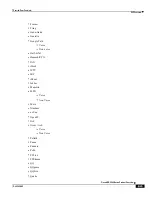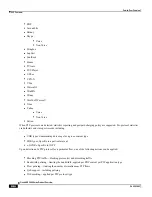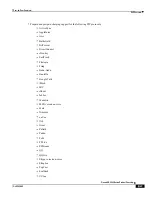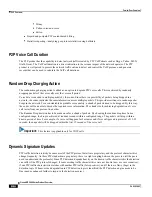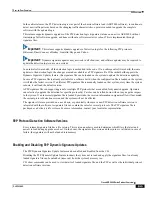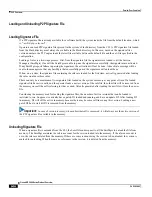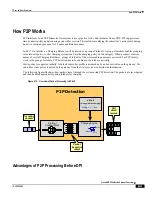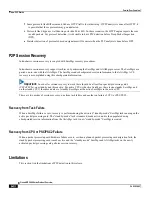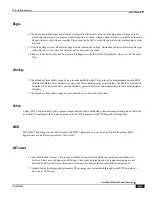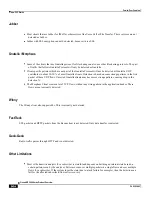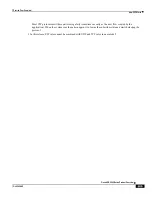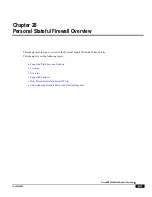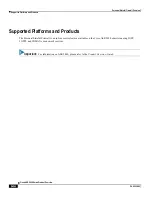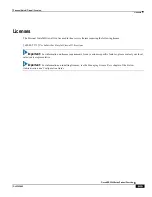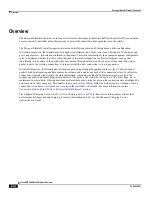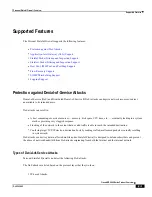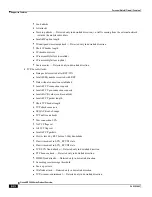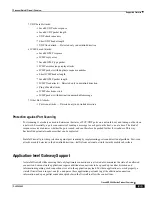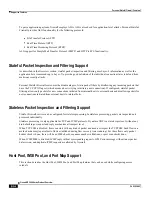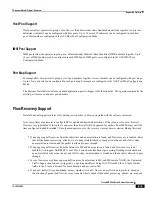
Peer-to-Peer Overview
▀ P2P Overview
▄ Cisco ASR 5000 Series Product Overview
OL-22938-02
Loading and Unloading P2P Signature File
Loading Signature File
If a P2P signature file is already available for a software build, the system loads the file from the default location, which
is ―
/usr/lib/p2p-rules.xml
‖.
Operators can load P2P signature files present in the system‘s Flash directory from the CLI. A P2P signature file loaded
from the Flash directory must always be available in the Flash directory. In this case, based on the signature files‘
version numbers, the P2P engine loads the latest file available between the default file and the new file specified in the
configuration.
Loading of rules is a two-stage process. First, from the signature file the signatures are loaded to all the Session
Managers (SessMgrs). Once all the SessMgrs are able to parse the signatures successfully, the signatures are activated.
If any SessMgr reports failure in parsing the signatures, the activation will not be done. A deactivate message will be
sent to the managers so that any SessMgrs that successfully parsed the signatures will unload them.
When, on a system, the signature file containing the rules are loaded for the first time, new calls generated after loading
the rules would use these rules.
There can only be a maximum of two signature files loaded on the system‘s memory at any point of time. If a loaded
signature file has active calls, and the operator loads a newer version of the rule file, the older file will be removed from
the memory once all the calls referring to it have ended. All calls generated after loading the new file will use the newer
file.
Considering the memory used for loading the signature files, the number of active versions that can be loaded is
restricted to two. Suppose we currently have a patch D1 loaded and running, and have an update D2. After loading D2
in memory, D1 will still be active in memory because there may be some call lines using this version. Loading a new
patch D3 has to wait till D1 is removed from the memory.
Important:
In case of session recovery, when subscriber call is recovered, it will always use the active version of
the P2P signature file available in the memory.
Unloading Signature File
When a signature file is unloaded from the CLI, the SessCtrl sends request to all the SessMgrs to unload the file from
memory. The SessMgr maintains the reference count for the version loaded into the memory. If the reference count is
zero, the rules are deleted from the memory. If there are some sessions using the version to be unloaded, the version is
marked for unloading. When there are no references to the version, it is deleted from the memory.
Содержание ASR 5000 Series
Страница 1: ......
Страница 26: ......
Страница 48: ...New In Release 10 0 SCM Features Cisco ASR 5000 Series Product Overview OL 22938 02 ...
Страница 50: ......
Страница 58: ......
Страница 67: ...Product Service and Feature Licenses Default Licenses Cisco ASR 5000 Series Product Overview OL 22938 02 ...
Страница 68: ......
Страница 126: ......
Страница 138: ......
Страница 146: ......
Страница 218: ......
Страница 236: ......
Страница 356: ......
Страница 374: ......
Страница 422: ......
Страница 496: ......
Страница 572: ......
Страница 654: ......
Страница 700: ......
Страница 726: ......
Страница 784: ......
Страница 816: ......
Страница 839: ...Network Address Translation Overview How NAT Works Cisco ASR 5000 Series Product Overview OL 22938 02 ...
Страница 841: ...Network Address Translation Overview How NAT Works Cisco ASR 5000 Series Product Overview OL 22938 02 ...
Страница 844: ......
Страница 906: ......
Страница 926: ......
Страница 942: ......
Страница 943: ...Cisco ASR 5000 Series Product Overview OL 22938 02 Chapter 30 Technical Specifications ...
Страница 966: ......
Страница 967: ...Cisco ASR 5000 Series Product Overview OL 22938 02 Chapter 31 Safety Electrical and Environmental Certifications ...
Страница 972: ......

